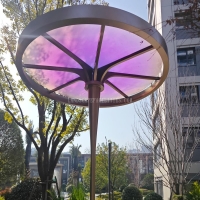Welcome to the website for landscape facilities products and knowledge.
How does the bin’s design prevent the escape of airborne particles during use?
The design of modern bins plays a crucial role in preventing the escape of airborne particles, ensuring hygiene and safety in various environments. Here’s how it works:
1. Sealed Lids: Many high-quality bins feature tightly sealed lids that create a barrier, trapping odors and particles inside. This is particularly important in medical or kitchen settings where airborne contaminants can pose health risks.
2. Filter Systems: Some advanced bins incorporate activated carbon or HEPA filters to capture fine particles and neutralize odors before they can escape into the surrounding air.
3. Foot Pedals or Touchless Mechanisms: By minimizing direct contact, these designs reduce the chances of particles being stirred up during use, maintaining cleaner air quality.
4. Smooth Inner Surfaces: Bins with seamless, non-porous interiors prevent particle buildup and make cleaning easier, reducing the risk of contamination.
5. Weighted or Self-Closing Mechanisms: These ensure the lid closes promptly after use, preventing prolonged exposure of waste to the air.
Innovative bin designs are essential for maintaining hygiene, especially in sensitive areas like hospitals, labs, or food preparation spaces. By combining smart engineering with user-friendly features, these bins effectively contain airborne particles, contributing to a healthier environment.
Related search:

Recommendation
Metal frame with gradient color acrylic combined with high-end shading landscape facilities